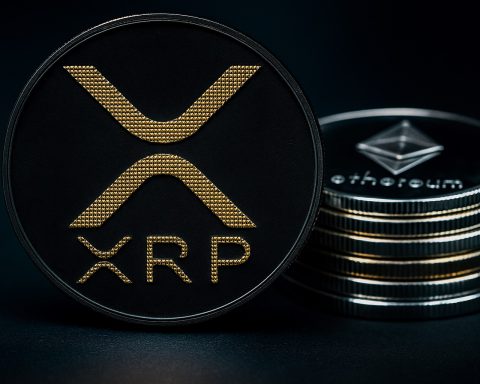Plug Power stock (NASDAQ: PLUG) ended Friday’s session under pressure again, as investors digested a fresh $375 million convertible notes deal, ongoing dilution concerns, and the company’s still‑loss‑making hydrogen business model.
On Friday, November 21, 2025, PLUG closed around $1.87, down nearly 1% on the day. The stock traded between roughly $1.82 and $1.94 on volume of about 32 million shares, well below its recent three‑month average turnover of more than 120 million shares. [1]
Even after a modestly quiet session today, the bigger picture is stark: Plug Power has fallen more than 50% from its early‑October high near $4.58, and it sits near the lower half of its 52‑week range of roughly $0.69 to $4.58. [2]
PLUG stock price action: a bruising week after new financing
The latest leg down began mid‑week, when Plug Power announced a $375 million private offering of 6.75% convertible senior notes due 2033. [3]
- Following the announcement, PLUG fell more than 20% in one session, briefly trading below $1.75 as investors reacted to yet another capital raise and the prospect of future dilution. [4]
- As of Friday’s close, the stock is down sharply from the $2.14 level it held before the deal was unveiled on November 18. [5]
This sell‑off caps a highly volatile stretch for PLUG, which has swung between optimism on improving cash burn and renewed worries about its balance sheet and path to profitability.
Inside Plug Power’s $375 million convertible notes deal
The new financing is at the heart of today’s PLUG stock story. According to Plug Power’s official announcement, the company priced $375 million in aggregate principal amount of 6.75% Convertible Senior Notes due 2033 in a Rule 144A private placement: [6]
- Coupon: 6.75% interest, paid semi‑annually.
- Maturity: December 1, 2033, unless earlier converted, redeemed, or repurchased.
- Price: The notes were sold at 95% of face value.
- Conversion terms: Initial conversion rate of 333.3333 shares per $1,000 in principal, equivalent to a conversion price of roughly $3.00 per share—about a 40% premium to PLUG’s $2.14 close on November 18. [7]
At full conversion, the $375 million principal would translate into roughly 125 million new shares, on top of Plug’s existing ~1.39 billion common shares outstanding. [8]
Use of proceeds: swapping expensive debt for cheaper, longer‑dated paper
Plug Power isn’t raising this money just to pile on more leverage. Management is using most of the deal to refinance high‑cost obligations: [9]
- About $245.6 million of the net proceeds will be used to fully repay 15% secured debentures.
- Roughly $101.6 million, plus $52.4 million of cash on hand, will go toward repurchasing about $138 million of existing 7% convertible senior notes due 2026.
- The company estimates the refinancing could save around $20 million per year in interest and free up assets that had been pledged as collateral under the secured debentures. [10]
From a pure balance‑sheet perspective, this is a de‑leveraging and de‑risking move: Plug is pushing out maturities, lowering coupon costs, and shifting from secured to unsecured debt.
However, the convertible structure means that if PLUG trades above $3 once conversions are allowed (no earlier than February 28, 2026), noteholders will have a strong incentive to convert, adding a large slug of new shares into an already crowded capital structure. [11]
That trade‑off—lower interest expense today versus potential equity dilution tomorrow—is a central reason investors have sold the stock into this announcement.
Q3 2025 earnings: cash burn improves, profits still elusive
The financing comes just days after Plug Power reported its third‑quarter 2025 results on November 10. [12]
Key Q3 highlights:
- Revenue: $177 million, up modestly from $173.7 million a year earlier, but slightly below some analyst expectations.
- Business mix: Around $65 million of that revenue came from GenEco electrolyzer sales, up 46% sequentially and 13% year‑on‑year, showing genuine growth in Plug’s core hydrogen‑equipment offering. [13]
- GAAP profitability:
- GAAP gross loss of about $120 million, worse than the $100 million gross loss in Q3 2024.
- GAAP EPS of roughly ‑$0.31 versus ‑$0.25 a year earlier, reflecting heavy non‑cash charges. [14]
- Adjusted metrics:
- Adjusted gross loss improved to about ‑$37 million, from ‑$86 million a year earlier, as pricing and cost actions began to show up in the numbers.
- Adjusted EPS improved to around ‑$0.12 from ‑$0.23 in Q3 2024, beating consensus expectations by roughly a cent. [15]
- Cash burn: Net cash used in operating activities was about $90 million, a 49% year‑on‑year improvement and 53% better than the prior quarter. Plug ended the quarter with ~$166 million of unrestricted cash and cash equivalents. [16]
Those figures show a mixed picture. Cash burn is trending in the right direction, and adjusted margins are improving—but GAAP losses remain heavy, and the company is still far from self‑funding.
Project “Quantum Leap” and cost‑cutting
Plug has responded to a tougher funding and operating environment with an aggressive restructuring program dubbed “Project Quantum Leap.” [17]
- In Q3, Plug recorded roughly $226 million of charges related to impairments, restructuring, and inventory adjustments tied to this program. [18]
- Management has previously indicated the initiative is designed to cut annual expenses by an estimated $150–$200 million, via headcount reductions, facility consolidations, and tighter capital spending. [19]
The company also highlighted several liquidity‑enhancing moves:
- A post‑quarter capital raise of about $370 million through the exercise of existing investor warrants. [20]
- A non‑binding letter of intent with a major U.S. data‑center developer to monetize certain electricity rights in New York and another location, a move Plug believes could generate more than $275 million in liquidity improvements through asset monetization, release of restricted cash, and reduced maintenance costs. [21]
- Plug previously secured a $1.66 billion U.S. Department of Energy (DOE) loan guarantee to help finance multiple green hydrogen plants, but more recently said it plans to pause activities related to the DOE loan program and prioritize higher‑return opportunities and third‑party supply agreements instead. [22]
Even with these measures, Plug continues to consume significant cash—a key reason the market remains skeptical and highly sensitive to any new capital‑raising announcements.
Governance and dilution: special meeting aims to unlock more shares
Beyond the latest financing, Plug Power is also moving to reshape its corporate charter in ways that matter directly for PLUG shareholders.
In a preliminary proxy statement filed this week, Plug called a virtual special meeting for January 15, 2026. Stockholders will be asked to vote on: [23]
- Changing the voting standard for certain charter amendments so they can be approved by a majority of votes cast rather than a majority of all outstanding shares, aligning the company with Delaware’s updated corporate law.
- Doubling authorized common stock from 1.5 billion to 3.0 billion shares.
- Allowing the board to adjourn the special meeting to solicit additional proxies if support for the first two proposals falls short.
Plug’s board argues that the company is “nearing the limit” of its authorized shares:
- As of November 12, 2025, Plug had about 1.39 billion shares outstanding and reports that less than 0.4% of its authorized common stock remains available for issuance. [24]
- The company has already issued warrants for roughly 185.4 million shares with a $2.00 exercise price expiring in March 2028. [25]
- It also references obligations tied to the new $375 million of 6.75% convertible notes due 2033, which require an increase in authorized shares by February 28, 2026 so that potential conversions can be fully reserved. [26]
If shareholders do not approve the share‑increase proposal, Plug warns it will proceed with a reverse stock split that was already authorized at its 2025 annual meeting in order to create more issuance capacity. [27]
For current investors, the message is clear: more shares are very likely coming—either directly via a higher authorization, or indirectly via a reverse split followed by additional issuance.
Leadership transition and strategy
Amid these financial and governance moves, Plug is also undergoing a leadership transition. In its Q3 release, the company announced that Jose Luis Crespo has been named incoming Chief Executive Officer, set to succeed long‑time CEO Andy Marsh. [28]
Crespo, who has served as President and has a long history with Plug’s commercial organization, is expected to focus on:
- Scaling the electrolyzer business, where Plug now reports more than 230 MW of projects in motion across Europe, Australia, and North America, with a development pipeline exceeding 8 GW. [29]
- Sharpening execution in material‑handling fuel cells and hydrogen fuel supply, where Plug continues to serve large customers including Walmart, Amazon, Home Depot, BMW, and BP. [30]
Management continues to reiterate a goal of becoming EBITDAS‑positive in the second half of 2026, but the market remains unconvinced that this target will be met without further dilution or delays. [31]
What Wall Street and big investors are saying about PLUG
Analysts and institutional investors are sharply divided on PLUG stock.
- According to data compiled by StockAnalysis, 13 analysts currently rate Plug Power a “Hold” on average, with a consensus 12‑month price target around $2.15—only modestly above today’s price. [32]
- Quiver Quantitative’s tracking of recent analyst reports shows a cluster of price targets in the $1–$3.50 range, including a $2.50 target from both Canaccord Genuity and Susquehanna this month, a more optimistic $7.00 target from HC Wainwright, and low‑end targets at $1.00–$1.60 from BMO and Jefferies. [33]
Institutional flows tell a similarly polarized story:
- Some large holders, such as Norges Bank and Heights Capital, have dramatically reduced or exited positions in recent quarters.
- Others, including Goldman Sachs, BlackRock, UBS, and Millennium Management, have added millions of shares, suggesting there is still appetite for the high‑risk, high‑reward hydrogen theme. [34]
On social media, discussions around PLUG revolve around three recurring themes:
- Dilution and capital raises – repeated financings have frustrated long‑time shareholders.
- Cash burn and solvency risk – skeptics question whether Plug can hit its 2026 profitability target before needing even more capital. [35]
- Green‑hydrogen upside – bulls highlight Plug’s growing electrolyzer orders, data‑center partnerships, and strategic customers as reasons to stay the course despite volatility. [36]
Key risks and catalysts for PLUG stock going forward
For traders and longer‑term investors watching PLUG today, several near‑term catalysts and risks stand out:
1. Closing of the convertible notes and debt repurchases
The convertible deal is expected to close around November 21, 2025, along with the partial repurchase of the 2026 notes. Investors will be watching: [37]
- Final net proceeds and any adjustments to guidance on interest expense.
- How rating agencies and lenders respond to the new capital structure.
2. Special meeting on January 15, 2026
The January 15, 2026 special meeting may be the most important governance event for PLUG in years. Outcomes to watch: [38]
- Approval of the new voting standard and share authorization would likely cement management’s ability to raise additional equity, satisfy warrant and convertible obligations, and potentially support future partnerships or acquisitions.
- Rejection of these changes could force the company to rely on the already approved reverse stock split to create more headroom, a step that often meets with mixed market reaction.
3. Execution on Project Quantum Leap
Over the next several quarters, Plug will need to prove that Project Quantum Leap is delivering real, sustainable cost savings rather than one‑time charges:
- Investors will scrutinize quarterly cash burn, gross margins, and operating expenses to see whether the promised $150–$200 million in annual savings is materializing. [39]
4. Macro and policy environment for green hydrogen
Plug’s long‑term thesis rests on a supportive policy framework and growing demand for green hydrogen in logistics, industrials, and data centers. Changes to tax credits, permitting, or energy‑transition policy could materially affect the company’s economics—positively or negatively. [40]
Bottom line: PLUG stock today
As of November 21, 2025, PLUG stock sits at roughly $1.87, a far cry from its early‑October highs and deeply below its 52‑week peak of $4.58. [41]
The latest convertible notes financing helps Plug Power refinance expensive debt and extend maturities but reinforces a harsh reality for shareholders: the company remains heavily reliant on capital markets, and dilution risk is structural, not temporary.
At the same time, Plug is growing electrolyzer revenue, improving adjusted margins, and cutting cash burn, all while pivoting strategy under incoming CEO Jose Luis Crespo and pursuing ambitious green‑hydrogen projects. [42]
For now, PLUG remains a high‑volatility, high‑risk stock. Its performance in the coming months will largely depend on:
- Successful closing and integration of the new financing,
- The outcome of January’s special shareholder meeting, and
- Whether management can turn operational progress into a credible path to break‑even without exhausting investor patience—or the share count.
Disclosure: This article is for informational purposes only and does not constitute investment advice, a recommendation to buy or sell any security, or a substitute for independent financial research. Always perform your own due diligence and consider consulting a licensed financial professional before making investment decisions.
References
1. www.investing.com, 2. www.barrons.com, 3. www.ir.plugpower.com, 4. www.barrons.com, 5. www.ir.plugpower.com, 6. www.ir.plugpower.com, 7. www.ir.plugpower.com, 8. www.ir.plugpower.com, 9. www.ir.plugpower.com, 10. www.benzinga.com, 11. www.ir.plugpower.com, 12. www.ir.plugpower.com, 13. www.ir.plugpower.com, 14. www.ir.plugpower.com, 15. www.ir.plugpower.com, 16. www.ir.plugpower.com, 17. www.ir.plugpower.com, 18. www.ir.plugpower.com, 19. last10k.com, 20. www.ir.plugpower.com, 21. www.ir.plugpower.com, 22. www.timesunion.com, 23. www.stocktitan.net, 24. www.stocktitan.net, 25. www.gurufocus.com, 26. www.stocktitan.net, 27. www.stocktitan.net, 28. www.ir.plugpower.com, 29. www.ir.plugpower.com, 30. www.ir.plugpower.com, 31. www.ir.plugpower.com, 32. stockanalysis.com, 33. www.quiverquant.com, 34. www.quiverquant.com, 35. www.barrons.com, 36. www.ir.plugpower.com, 37. www.ir.plugpower.com, 38. www.stocktitan.net, 39. www.ir.plugpower.com, 40. www.timesunion.com, 41. www.investing.com, 42. www.ir.plugpower.com







